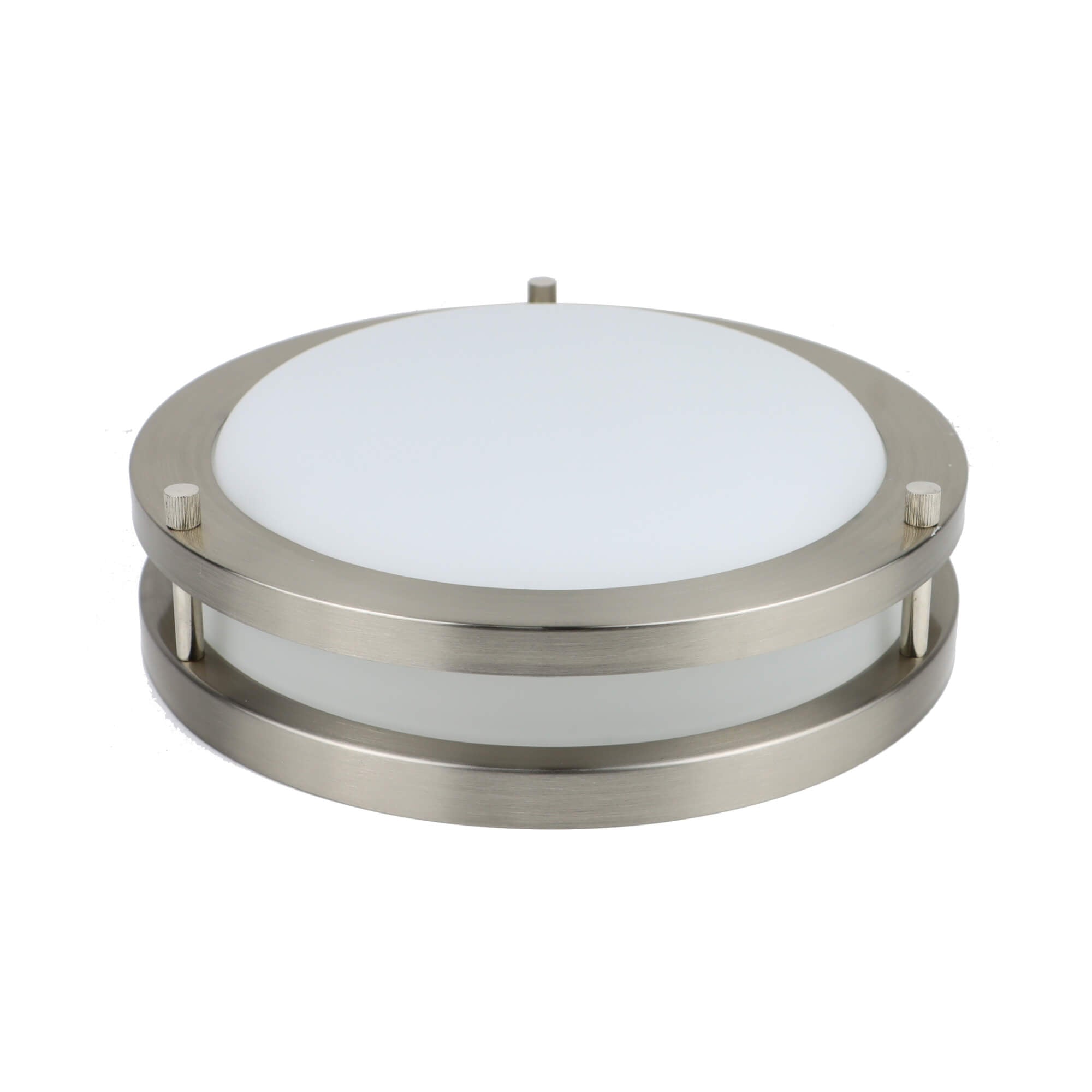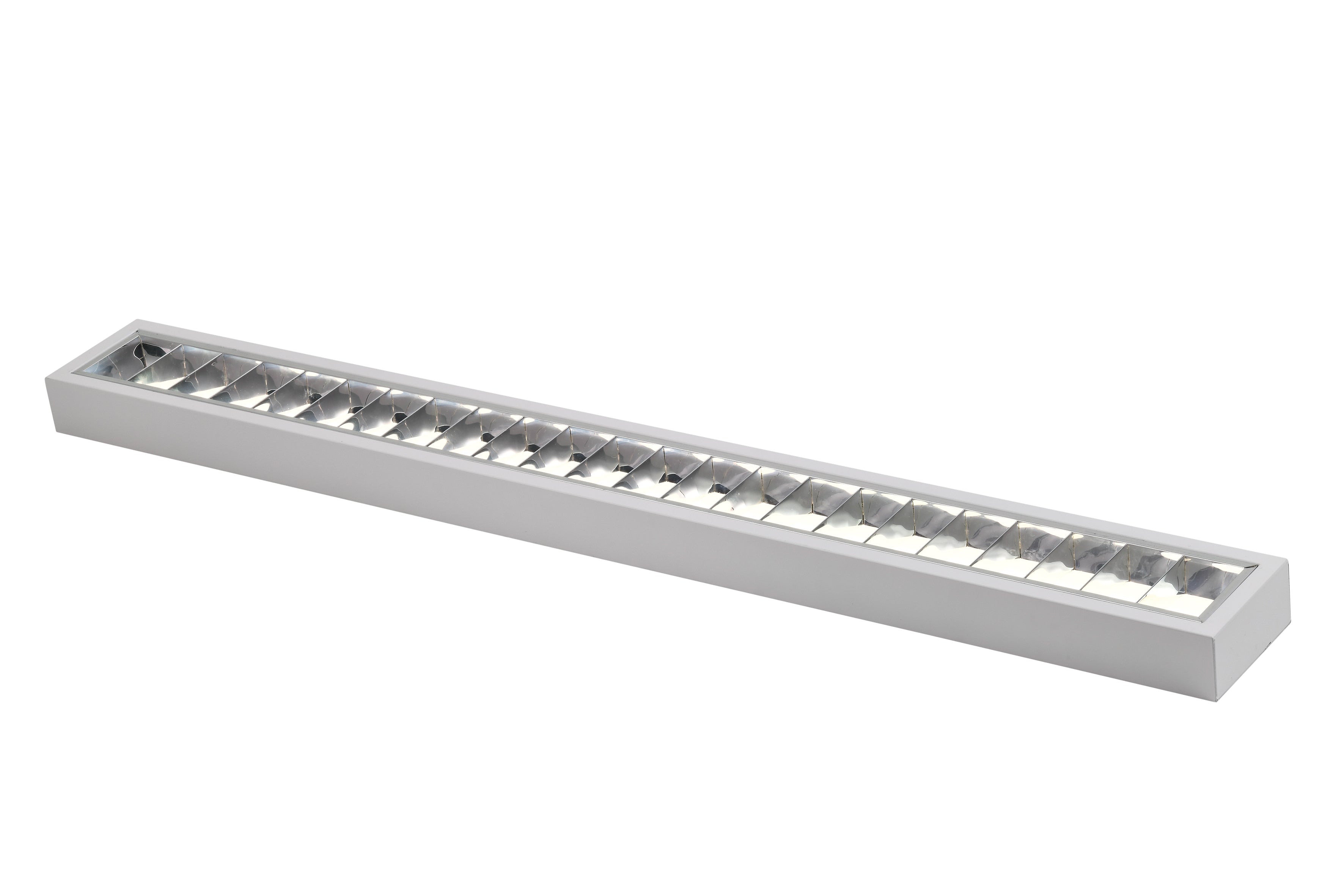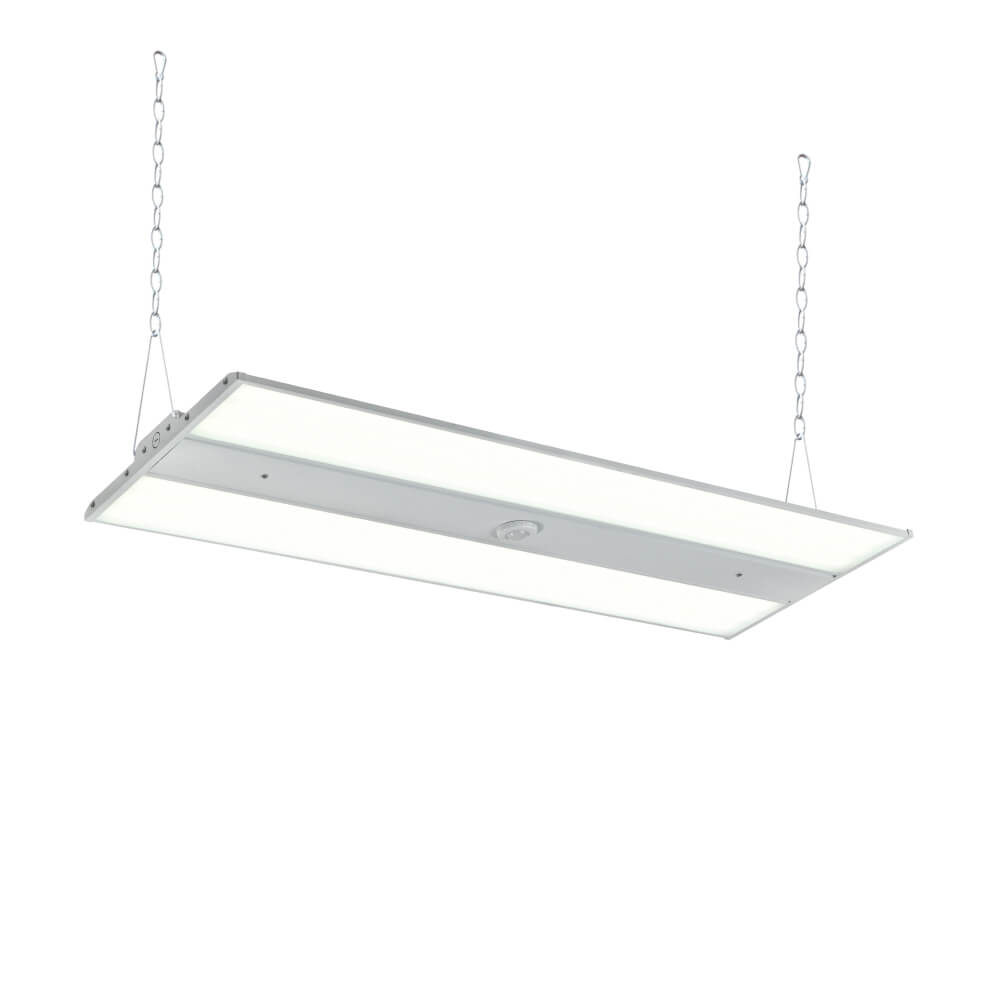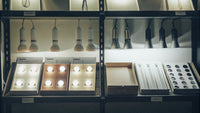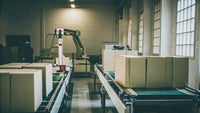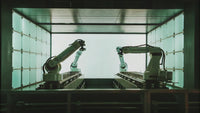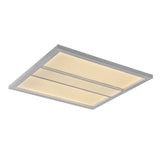Don't Forget a Spot! Fire Station Lighting Room-by-Room Guide
Fire stations are critical facilities that require careful consideration of lighting design to ensure the safety and efficiency of firefighters. This report explores the specific lighting needs of fire stations, focusing on color, function, and clarity. It examines the different types of rooms in a fire station, their functions, and the appropriate lighting solutions for each, considering factors such as color temperature, light intensity, glare control, and emergency lighting requirements.
Lighting Needs of Fire Stations
Fire stations operate 24/7 and require lighting that supports various activities, including:
- Emergency Response: Rapid response to emergencies requires lighting that promotes alertness and quick decision-making.
- Maintenance and Repair: Working on equipment and vehicles requires bright, clear lighting for visibility and safety.
- Training and Administration: Training rooms and offices need lighting that supports focus and productivity.
- Living Spaces: Dormitories and common areas require lighting that promotes rest and relaxation.
- Safe Evacuation: Emergency lighting is crucial for providing illumination and ensuring the safe evacuation of occupants during a fire.
Types of Rooms in a Fire Station
Fire stations typically include the following types of rooms:
- Apparatus Bay: Houses fire trucks and emergency response vehicles. This area needs to accommodate various types of vehicles, both large and small. It also includes support utilities like exhaust systems, compressed air, water, and power outlets for the vehicles. Requires bright, high-intensity lighting for safe and efficient movement of vehicles and equipment.
- Dormitories: Sleeping quarters for firefighters. Requires lighting that can be adjusted to promote rest and relaxation, as well as provide adequate illumination for nighttime emergencies.
- Kitchen/Dining Area: For meal preparation and communal dining. Requires bright, general lighting with task lighting for food preparation areas.
- Dayroom/Lounge: For relaxation and downtime. Requires comfortable lighting that promotes relaxation.
- Training Room: For training exercises and meetings. Requires flexible lighting that can be adjusted for different activities, such as presentations or hands-on training.
- Fitness Room: For physical fitness activities. Requires bright, energizing lighting.
- Administrative Offices: For administrative tasks and paperwork. Requires task lighting for desks and general lighting for the office space.
- Watch Room/Dispatch Center: For monitoring emergencies and dispatching crews. Requires bright, focused lighting for clear visibility of monitors and equipment.
- Station Captain’s Suite: Private quarters for the station captain.
- Personal Protection Equipment (PPE) Gear Storage: Dedicated space for storing protective gear.
- Hose Storage: Area for storing and drying fire hoses.
- SCBA Maintenance Room: Room for maintaining self-contained breathing apparatus (SCBA).
- SCBA Compressor Room: Houses the air compressor for filling SCBA tanks.
- Protective Clothing Laundry: Dedicated laundry for cleaning protective clothing.
- Equipment Wash/Disinfection: Area for cleaning and disinfecting equipment.

Lighting Solutions for Different Rooms
| Room Type | Color Temperature | Light Intensity (footcandles) | Glare Control | Emergency Lighting | Notes |
|---|---|---|---|---|---|
| Apparatus Bay | Cool white (4000-5000K) or daylight (6500K) | 50-100 | High | Required | Prioritize bright, uniform lighting for safe maneuvering of vehicles and equipment. |
| Dormitories | Warm white (2700-3000K) | Dimmable | Minimize glare | Required | Consider tunable lighting to support sleep and alertness. |
| Kitchen/Dining Area | Neutral white (3500-4100K) | 30-50 | Moderate | Required | Use a balance of ambient and task lighting. |
| Dayroom/Lounge | Warm white (2700-3000K) | 20-30 | Low | Required | Create a relaxing atmosphere with comfortable lighting. |
| Training Room | Cool white (4000-5000K) | 30-70 | Adjustable | Required | Ensure flexibility for different activities. |
| Fitness Room | Cool white (4000-5000K) or daylight (6500K) | 50-100 | High | Required | Provide energizing lighting for physical activity. |
| Administrative Offices | Cool white (4000-5000K) | 30-50 with task lighting | Minimize glare on screens | Required | Combine ambient and task lighting for optimal functionality. |
| Watch Room/Dispatch Center | Cool white (4000-5000K) | 70-100 | High | Required | Prioritize clear visibility of monitors and equipment. |
When designing lighting for fire stations, it’s crucial to select appropriate color temperatures for different areas to optimize alertness, focus, and relaxation. For example, cooler temperatures are ideal for workspaces and emergency response areas, while warmer temperatures are more suitable for living spaces and relaxation areas.
Apparatus Bay
- Color Temperature: Cool white (4000-5000K) or daylight (6500K) to promote alertness and visibility.
- Light Intensity: High intensity (50-100 footcandles) for clear visibility and safe maneuvering of vehicles. Additionally, consider the recommended light intensity levels for specific tasks:
- Short-range tasks (1-6 feet): 60-200 lumens
- Mid-range search (5-25 feet): 200-700 lumens
- Area scene lighting (10-60 feet): 3000-10000 lumens
- Glare Control: Use luminaires with good glare control to prevent eye strain and fatigue.
- Emergency Lighting: Ensure sufficient emergency lighting for safe evacuation and continued operation during power outages.
Dormitories
- Color Temperature: Warm white (2700-3000K) to promote relaxation and sleep. Incorporate tunable lighting systems that can adjust color temperature throughout the day to mimic natural light patterns and regulate firefighters’ circadian rhythms, improving sleep quality.
- Light Intensity: Dimmable lighting to allow for adjustment based on individual preferences and needs.
- Short-range tasks (1-6 feet): 60-200 lumens
- Mid-range search (5-25 feet): 200-700 lumens
- Area scene lighting (10-60 feet): 3000-10000 lumens
- Glare Control: Minimize glare from light fixtures to prevent sleep disruption.
- Emergency Lighting: Provide adequate emergency lighting for safe navigation during power outages.
Kitchen/Dining Area
- Color Temperature: Neutral white (3500-4100K) for a balanced and inviting atmosphere.
- Light Intensity: Moderate intensity (30-50 footcandles) for general illumination.
- Short-range tasks (1-6 feet): 60-200 lumens
- Mid-range search (5-25 feet): 200-700 lumens
- Area scene lighting (10-60 feet): 3000-10000 lumens
- Glare Control: Use diffusers or indirect lighting to minimize glare.
- Emergency Lighting: Ensure sufficient emergency lighting for safety during power outages.
Dayroom/Lounge
- Color Temperature: Warm white (2700-3000K) for a relaxing and comfortable environment.
- Light Intensity: Low to moderate intensity (20-30 footcandles) for a relaxed atmosphere.
- Short-range tasks (1-6 feet): 60-200 lumens
- Mid-range search (5-25 feet): 200-700 lumens
- Area scene lighting (10-60 feet): 3000-10000 lumens
- Glare Control: Use lamps with low glare to prevent eye strain.
- Emergency Lighting: Provide adequate emergency lighting for safety during power outages.
Training Room
- Color Temperature: Cool white (4000-5000K) to promote focus and attention.
- Light Intensity: Moderate to high intensity (30-70 footcandles) for clear visibility of presentations and training materials.
- Short-range tasks (1-6 feet): 60-200 lumens
- Mid-range search (5-25 feet): 200-700 lumens
- Area scene lighting (10-60 feet): 3000-10000 lumens
- Glare Control: Use adjustable lighting to minimize glare on screens or whiteboards.
- Emergency Lighting: Ensure sufficient emergency lighting for safe evacuation during power outages.
Fitness Room
- Color Temperature: Cool white (4000-5000K) or daylight (6500K) to promote energy and alertness.
- Light Intensity: High intensity (50-100 footcandles) for clear visibility and safety during exercise.
- Short-range tasks (1-6 feet): 60-200 lumens
- Mid-range search (5-25 feet): 200-700 lumens
- Area scene lighting (10-60 feet): 3000-10000 lumens
- Glare Control: Use luminaires with good glare control to prevent discomfort.
- Emergency Lighting: Provide adequate emergency lighting for safety during power outages.
Administrative Offices
- Color Temperature: Cool white (4000-5000K) to promote concentration and productivity.
- Light Intensity: Moderate intensity (30-50 footcandles) for general illumination with task lighting for desks.
- Short-range tasks (1-6 feet): 60-200 lumens
- Mid-range search (5-25 feet): 200-700 lumens
- Area scene lighting (10-60 feet): 3000-10000 lumens
- Glare Control: Use adjustable task lighting and anti-glare screens to minimize glare on computer screens.
- Emergency Lighting: Ensure sufficient emergency lighting for safe evacuation during power outages.
Watch Room/Dispatch Center
- Color Temperature: Cool white (4000-5000K) to promote alertness and focus.
- Light Intensity: High intensity (70-100 footcandles) for clear visibility of monitors and equipment.
- Short-range tasks (1-6 feet): 60-200 lumens
- Mid-range search (5-25 feet): 200-700 lumens
- Area scene lighting (10-60 feet): 3000-10000 lumens
- Glare Control: Use indirect lighting and anti-glare surfaces to minimize glare and reflections.
- Emergency Lighting: Ensure sufficient emergency lighting for uninterrupted operation during power outages.
Benefits of LED Lighting
LED lighting offers several advantages for fire stations, including:
- Energy Efficiency: LEDs consume significantly less energy than traditional lighting technologies, reducing energy costs and environmental impact.
- Long Lifespan: LEDs have a significantly longer lifespan than traditional bulbs, reducing maintenance needs and replacement costs.
- Improved Color Temperature: LEDs offer a wider range of color temperatures, allowing for better customization of lighting to suit different needs and activities.
- Durability: LEDs are more resistant to shock and vibration, making them ideal for demanding environments like fire stations.
- Zero Maintenance: LED lights require minimal maintenance, reducing downtime and labor costs.
Emergency Lighting Requirements
Emergency lighting is crucial in fire stations to ensure safe evacuation and continued operation during power outages. Emergency lighting systems should comply with relevant codes and standards, such as NFPA 101: Life Safety Code, more form this blog: LED Lighting: DLC Standard vs. Premium Certification.
Key requirements include:
- Minimum Illumination: Provide an average of 1 footcandle and a minimum of 0.1 footcandle at floor level along the path of egress. Illumination levels may decline to 0.6 footcandle average and a minimum at any point of 0.06 footcandle at the end of the emergency lighting time duration.
- Exit Sign Illumination: Exit signs should be illuminated by not less than 5 footcandles and employ a contrast ratio of not less than 0.5. They must be visible in both normal and emergency lighting modes.
- Duration: Maintain emergency illumination for at least 90 minutes.
- Automatic Activation: Emergency lighting should activate automatically upon power failure.
- Testing and Maintenance: Regularly test and maintain emergency lighting systems to ensure proper function.
Incident Scene Lighting
Good scene lighting is essential for firefighter safety and efficiency during nighttime operations. It improves visibility, allowing firefighters to navigate the scene, identify hazards, and locate victims more easily. Adequate scene lighting also helps fireground commanders assess smoke conditions and potential structural dangers.
Potential Lighting-Related Issues
Glare can significantly impact visibility and safety in fire stations, especially during emergencies. Selecting appropriate luminaires with good glare control and strategic placement of light fixtures can help mitigate these risks.
Here are some potential lighting-related issues in fire stations:
- Inadequate Lighting: Insufficient lighting can hinder visibility and create safety hazards, especially during emergencies. This can be addressed by increasing light intensity, adding task lighting, or using brighter light sources.
- Glare: Excessive glare can cause eye strain, fatigue, and discomfort, affecting performance and safety. Solutions include using luminaires with good glare control, adjusting light placement to minimize direct glare, and incorporating anti-glare surfaces.
- Improper Color Temperature: Using the wrong color temperature can negatively impact mood, alertness, and task performance. Choosing the right color temperature for different areas is crucial, with cooler temperatures for workspaces and warmer temperatures for living spaces.
- Inconsistent Lighting: Uneven lighting can create shadows and dark spots, increasing the risk of accidents. This can be addressed by ensuring even spacing of light fixtures, using a combination of ambient and task lighting, and considering the reflectance of surfaces.
- Poorly Maintained Lighting: Damaged or malfunctioning lights can reduce visibility and compromise safety. Regular maintenance and prompt replacement of damaged lights are essential.
- Faulty Wiring and Connections: Faulty wiring and connections are a common cause of lighting failure in industrial settings. This highlights the importance of proper installation by qualified electricians and regular inspections to identify and address potential wiring issues.
OEM Manufacturer Selection Criteria
Halcon Lighting is a leading OEM manufacturer with deep expertise in the Chinese market. When selecting an OEM manufacturer for fire station lighting, consider the following factors:
- Experience: Choose a manufacturer with a proven track record of designing and manufacturing lighting solutions specifically for fire stations. Look for manufacturers with experience in meeting the unique needs of this demanding environment.
- Product Quality: Select products that are durable, reliable, and energy-efficient. Consider factors such as the materials used, the construction quality, and the manufacturer’s warranty.
- Compliance: Ensure that the products comply with all relevant safety standards and regulations, including NFPA and local building codes.
- Customer Support: Choose a manufacturer that offers excellent customer support and after-sales service. This includes technical support, warranty service, and availability of replacement parts.
- Energy Efficiency: The Bulb Replacement Improving Government with High-Efficiency Technology Act (BRIGHT Act) emphasizes the importance of life-cycle cost-effectiveness and energy efficiency in government buildings. Prioritize manufacturers that offer energy-efficient lighting solutions and comply with the BRIGHT Act.
- Warranties: Inquire about product warranties and the manufacturer’s commitment to product support and longevity.
- Certifications: Look for manufacturers with relevant certifications, such as ISO 9001 for quality management or energy efficiency certifications.
Synthesis and Recommendations
Proper lighting design is paramount in fire stations to ensure the safety, efficiency, and well-being of firefighters. This report has highlighted the diverse lighting needs of different areas within a fire station and the importance of considering factors such as color temperature, light intensity, glare control, and emergency lighting requirements.
Key takeaways include:
- Optimize Alertness and Focus: Utilize cooler color temperatures in workspaces and emergency response areas to promote alertness and focus.
- Promote Rest and Relaxation: Implement warmer color temperatures in dormitories and common areas to facilitate rest and relaxation.
- Control Glare: Minimize glare through proper luminaire selection and strategic placement of light fixtures to enhance visibility and safety.
- Prioritize Energy Efficiency: Choose energy-efficient LED lighting solutions to reduce energy consumption and operating costs.
- Ensure Emergency Preparedness: Install and maintain reliable emergency lighting systems that comply with relevant codes and standards.
By implementing the lighting solutions and recommendations outlined in this report, fire stations can create a functional, safe, and comfortable environment that supports their critical mission.
